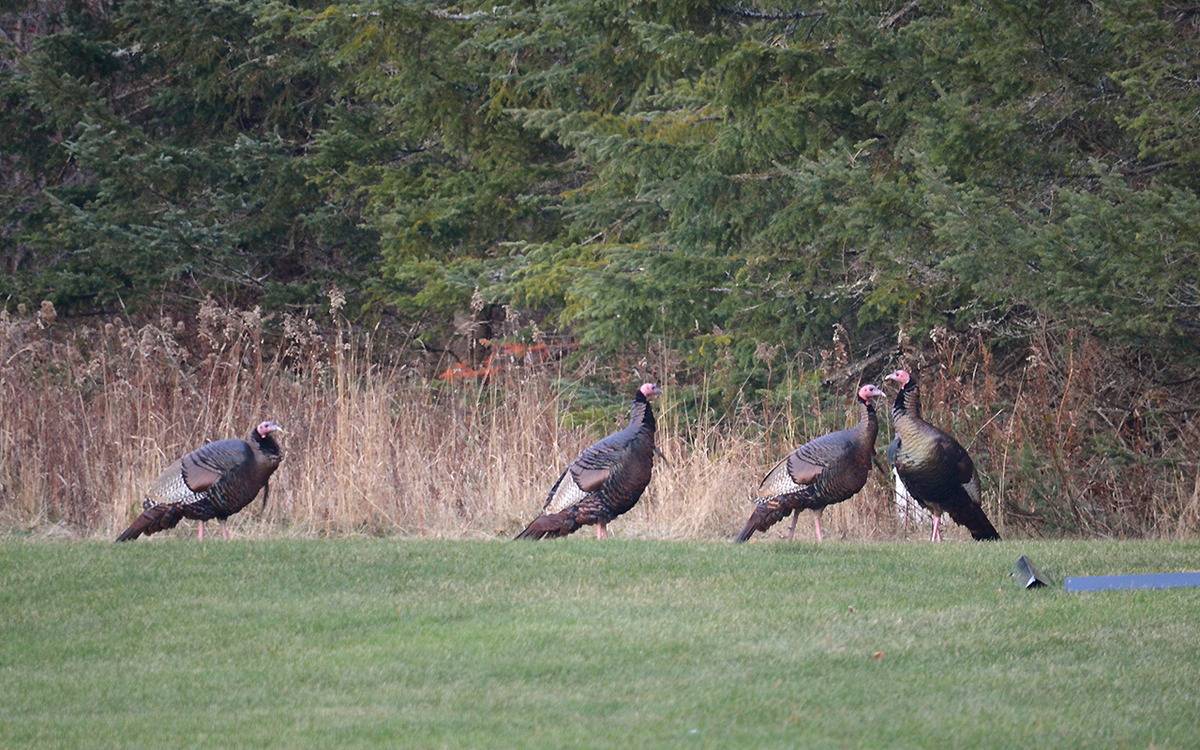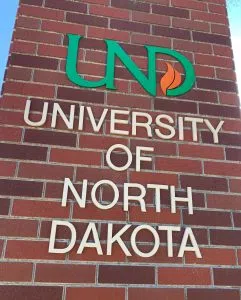Maine
35 years of Salman Khan: Maine Pyar Kiya to Bajrangi Bhaijaan, 7 binge-watch worthy films of the superstar

Salman Khan is easily one of the biggest superstars in Bollywood. He started his career in the late 1980s and got his major breakthrough with Maine Pyar Kiya. Since then, Khan has been through several ups and downs, both on the personal as well as professional front. However, his stardom today is unwavering. Recently, he clocked 35 years in the movie industry which is a massive achievement, to say the least. To celebrate this special occasion, here is a list of 7 movies of Khan that you can binge-watch and enjoy this weekend.
Maine Pyar Kiya
This 1989 romantic drama film gave Salman his major breakthrough in the industry. Directed by Sooraj Barjatya, it also starred Bhagyashree and Mohnish Bahl. Upon release, it went on to become a major commercial hit and won six Filmfare Awards.
Hum Aapke Hain Koun..!
This was another successful collaboration between Salman and Barjatya. Also starring Madhuri Dixit, this movie chronicles Indian wedding traditions. It met with overwhelming critical and commercial success and is considered to be one of the most influential Hindi movies of all time.
Andaz Apna Apna
In the same year (1994), Salman was a part of the comedy caper Andaz Apna Apna. It starred an ensemble cast of Salman, Aamir Khan, Raveena Tandon, and Karishma Kapoor. Despite the hype, the movie turned out to be a box-office flop. However, over the years, it attained the distinction of being a cult classic and is regarded as a comedy gem.
Hum Dil De Chuke Sanam
Hum Dil De Chuke Sanam was the second directorial venture of Sanjay Leela Bhansali. It starred Salman and Aishwarya Rai and is remembered for its beautiful sets and amazing songs. HDDCS turned out to be a hit and became one of the highest-grossing films of that year. It also bagged 17 Filmfare nominations.
Tere Naam
Tere Naam is an official remake of the 1999 Tamil language film Sethu. It stars Salman alongside Bhumika Chawla and follows the story of Radhe Mohan. Salman’s hairstyle and the movie’s songs went on to become an inevitable and indelible part of Indian pop culture. Tere Naam was also a turning point in Salman’s career as he had a string of flops before this film.
Bajrangi Bhaijaan
This Kabir Khan directorial saw Salman in a completely different avatar. Unlike his previous films, Salman’s character is shown as a fragile and sensitive person who also gets beaten up by bad guys. With an important message, flawless screenplay, and great music, the movie proved to be a major success. A sequel is currently in the works.
Khamoshi: The Musical
Khamoshi remains one of the most underrated movies of Salman’s career. Directed by Sanjay Bhansali, it also stars Manisha Koirala and Nana Patekar. The movie met with critical acclaim upon release but underperformed at the box office.
ALSO READ: Ameesha Patel to follow Gadar 2 co-star Sunny Deol and Salman Khan’s footsteps; says no to kissing onscreen

Maine
Delta Ambulance won’t require paramedics on some emergency calls in central Maine

Town officials sought answers from Delta Ambulance on Tuesday about a new plan to start using EMTs instead of sending paramedics on every emergency call, at the same time the regional transport service’s fees are going up.
Leaders from China, Belgrade and Vassalboro discussed their concerns with Chris Mitchell, Delta’s executive director, at China’s town office. Mitchell announced earlier this month that Delta’s per capita fees for towns will rise from $35 to at least $55 in July 2026, raising the alarm for towns that rely on the service.
He also said Delta is switching its EMS license from a paramedic level to an EMT level, which will permit EMTs to go on calls with or without a paramedic and offer basic life support. Paramedics with advanced life support training will also be working and able to intercept EMT ambulances on the way to a hospital if more care is needed.
Town officials worry the change means a higher cost for a more limited service.
Ambulance dispatchers determine how serious a call is based on the information they receive from an emergency caller, but it isn’t always reliable. Becky Hapgood, China town manager, said she is concerned a paramedic will be left behind for an emergency that requires advanced life support.
Mitchell said the change in licensure is a way of addressing paramedic shortages across the region. Calls that previously would have gotten no Delta ambulance because all paramedics were occupied can now get a basic-level ambulance, which Mitchell said would cover 57% of the service’s calls.
Mitchell said that because the stakes are higher in rural areas, Delta will have conversations with each town about its need for paramedics, considering rural roads and distance from an emergency room.
Delta operated a paramedic intercept system with Waterville that Mitchell said was made easier because of the two local hospitals and a concentration of calls in the city. Waterville, which runs its own transport operation, has a mutual aid agreement with Delta but is not one of the communities the service contracts with.
“We had a fly car — a paramedic on a SUV — covering two non-medic ambulances,” Mitchell said. “And that system worked really well, because at no point was there a paramedic that was really far away from a call.”
He added: “That model doesn’t translate well to a 500-square mile coverage area.”
Winslow has a mutual aid agreement with Delta to transport for each other free of charge, but paramedic shortages have strained that relationship, Winslow fire Chief Mike Murphy said during an August interview. Winslow calls Delta for a paramedic intercept when the town’s crew of per diem paramedics are occupied with other calls.
From July 2024 to July 2025, Murphy said, the department requested a paramedic from Delta 50 times and Delta said no 37 times.
Those instances forced Winslow to call Waterville or Fairfield for a paramedic, Murphy said, delaying the time help arrived on scene, especially after the closure of the nearest emergency room at Northern Light Inland Hospital in Waterville. Murphy said he wants to set up new inter-town agreements that rely less on Delta.
“I’m just looking to find a quicker response time if I don’t have a medic,” Murphy said.
Mitchell said during an interview in August that Delta prioritizes resources for towns that do not “already have the ability to transport.”
“If we sacrifice our last unit to get Winslow a paramedic, now those other towns that don’t have an ambulance — now they have nobody,” Mitchell said.
The change in licensure will bring more flexibility to calls, Mitchell said Tuesday.
The new plan will not take paramedics off the road, it will instead disperse them among more vehicles. Delta has hired 24 new people — mostly basic EMTs — in the last few months, Mitchell said.
“We didn’t reduce the number of paramedics in the system,” Mitchell said. “We just moved them around a little bit.”
Maine
New history trail shows resilience of Portland’s Jewish community
Standing on the other side of Fore Street across from Dock Fore Tavern, you might not pay attention to the faint yellow lettering of “Zeitman’s Grocery Store” that can be read on the bricks above the sports pub’s red awning. But once Riva Krut points it out, you won’t miss it again.
Moments later, as Krut tells the story of the grocery store run by a Jewish couple who immigrated from Ukraine at the start of the 20th century, the history of the building is also illuminated. The tale of 336 Fore Street is one of familial love, loss, prevalence in the face of antisemitic rulings from City Hall, and a Jewish businesswoman who stood under 5 feet tall, lived to 97 years old, and shaped the commercial district of Portland.
This stop along the new Portland Jewish History Trail is one of 28 that highlight the often unnoticed Jewish history of Portland.
The trail unveils the history of Jewish neighborhoods, congregations and synagogues, businesses, and involvement in the welfare and politics of the city from the end of the 19th century through the present. Using standing buildings, historic photos and research, the trail weaves together a portrait of Portland’s Jewish community as they made space for themselves while also developing their identity as Americans and Mainers alongside other immigrants in Portland.

“Portland’s history and future has been and will be made of many, many communities,” said Krut of Cumberland, who created the trail.
Launched with its first tour on Sunday, the trail consists of 28 locations, divided into five walking routes sorted by location and topic: the East End and Munjoy Hill, Middle and Fore Street businesses, Portland’s downtown, Woodford’s Corner and Deering Center, and Jewish cemeteries.
While anyone can walk the five trails with the map and historic background available online or in an app, the guided walking tours begin in front of Maine Jewish Museum and currently combine segments of three trails in a two-and-a-half-hour, three-mile loop.
During the inaugural tour, 20 participants stood outside 11 Portland buildings as they listened to Krut, 67, tell stories of their residents and activities over the centuries. With so many buildings standing in Portland for over 100 years, the tour “let the bricks talk.”
“We’re here all the time. It’s nice to see it in a new light,” said tour participant Kim Levy, 52, of Cape Elizabeth.
The trail emerged from the research of Krut’s husband, Harris Gleckman, who grew up Jewish in Portland. After a career working for the United Nations in New York and retiring in Maine, Gleckman began researching Jewish history in the state as a hobby, compiling the database using sources such as census records and annual business directories.

Over 20 years, the project became Documenting Maine Jewry, a website containing over 40,000 biographical records, and 10,000 photographs, newsletters, and other documents, and pictures of over 7,800 Jewish headstones.
The Maine Jewish Museum adopted Documenting Maine Jewry’s catalogue this spring in collaboration with Colby College, exemplifying the museum’s emerging effort to tell the stories of all Jews in Maine, not just Portland, said the museum’s executive director, Dawn LaRochelle.
“We really want to capture Jewish history in all of Maine, and hopefully these walking tours will ultimately be replicated in different parts of Maine, not just Portland,” said LaRochelle.
The Jewish History Tour – the first Jewish historic tour offered in Portland and first tour by the museum – was created by Krut in honor of her husband’s research. A historian of Jewish immigrant history herself, she is versed in linking location and dates to create an understanding of the past.
“Place and identity for me are connected. A place is also about time. What that building meant in 1912 is different than today,” she said.
Stops on the guided tour include the North School, a former public school where up to 40% of a class appeared to be Jewish on attendance records; the original location of the synagogue that is now condos and a hair salon; the former Jewish Community Center, a hub of activity and culture on Cumberland Avenue, and City Hall, where Linda Abromson served as the first Jewish female mayor starting in 1982.
Debbie Wineberg, 68, took the walking tour on Sunday with her husband, Howard Wineburg, 71, of Wells. Her Jewish grandparents and mother lived on Portland’s Vesper Street and attended the Etz Chaim Synagogue, where the Maine Jewish Museum now also resides on Congress Street.
Debbie Wineberg said that in the face of increasing antisemitism, she thought twice about attending a public Jewish event like the tour. But ultimately, she felt like it was important to show up.
“We want to support organizations like the Maine Jewish Museum,” she said.
“We’re not big synagogue goers, so we wanted to come and get the education side of things,” said Howard Wineberg.
At a time where the Jewish community faces both prejudice and division over the war in Gaza, the tour and its participants instead focused on what connects Jewish Mainers to each other and to other communities. This was particularly accomplished by viewing Portland Jewish history through the lens of immigration and building community.

“I am not interested in talking about antisemitism. I’m interested in our commonalities, and the immigrant story is that story,” said Bobbie Lamont, 62, who helped lead the tour group.
As the tour moves through locations and time periods, it takes participants through the arrival of Jewish immigrants, primarily from Eastern Europe to Portland to how they integrated and shaped the city over the generations in all areas of life.
Krut said the Jewish history of resilience in the face of prejudice is one that she hopes will resonate with all types of immigrants in Portland today as they face challenges and persist in building a life here.
“I looked at it as a series of events for minorities now to look at and see how the Jews found success in the face of antisemitism,” said Krut.
Both Krut and tour participants noted how the Jewish History Trail intertwines with other historic walking trails in Portland such as the trail about Black and abolitionist history, the women’s history trail, a queer history trail, and a tour of Chinese-American history. Just as the histories of marginalized groups are connected through the city’s past, Krut hopes that the growing network of historic trails will inspire more of these histories to be told.
“Every group has a story, and we should go out and tell it,” said Krut.
Maine
Maine fall turkey season opens Monday

Fall turkey season kicks off on Monday. Depending on the zone, hunters are able to shoot up to five birds for the season.
Wildlife management zones 1, 2, 4, 5 and 9 are closed to the taking of turkeys.
Maine’s fields and forests weren’t always filled with these entertaining game birds.
In the early 1800s a combination of intense farming and unregulated hunting eliminated turkeys from the state.
Decades of failed reintroduction attempts followed, including the release of 24 birds on Swan Island in Sagadahoc County in 1942 and the introduction of both wild and game-farm stocks in the 1960s.
It wasn’t until 1977, when 41 wild birds from Vermont were released into York and Eliot, that the population began to grow. Additional releases in Waldo and Hancock counties helped further rebuild the population.
In the late 1980s, birds obtained from Connecticut’s wild turkey population helped augment the increasing one in Maine.
Turkeys are now found in all of Maine’s 16 counties. Maine Department of Inland Fisheries and Wildlife generated population estimates from harvest data and a recent banding study, placing the current spring population at 70,000 birds — this does not include poults hatched during the current year.
Unlike spring turkey hunting where the focus is on shooting toms, fall hunting allows for either sex. These regulations allow for more flexibility, but also possibly more challenges. Without the opportunity to call birds into range like you can during the breeding season, hunters must rely more on group behavior and movement patterns.
Hunting turkeys helps control numbers in wildlife management zones where populations are strong, preventing issues such as agriculture damage, competition with other ground-nesting birds and rising conflicts with landowners.
-

 World1 week ago
World1 week agoTrump and Zelenskyy to meet as Poland pressures NATO on no fly zone over Ukraine
-

 Technology1 week ago
Technology1 week agoNew Evite phishing scam uses emotional event invitations to target victims
-

 Health1 week ago
Health1 week agoDiabetes risk quadruples with use of popular natural remedy, study finds
-

 Politics1 week ago
Politics1 week agoHouse plans Thursday vote on government funding bill to extend spending through November
-

 Business1 week ago
Business1 week agoDisney, Universal and Warner Bros. Discovery sue Chinese AI firm as Hollywood's copyright battles spread
-

 Health1 week ago
Health1 week agoWho Makes Vaccine Policy Decisions in RFK Jr.’s Health Department?
-

 Finance2 days ago
Finance2 days agoReimagining Finance: Derek Kudsee on Coda’s AI-Powered Future
-

 Lifestyle1 week ago
Lifestyle1 week agoBobbi Brown doesn’t listen to men in suits about makeup : Wild Card with Rachel Martin

















